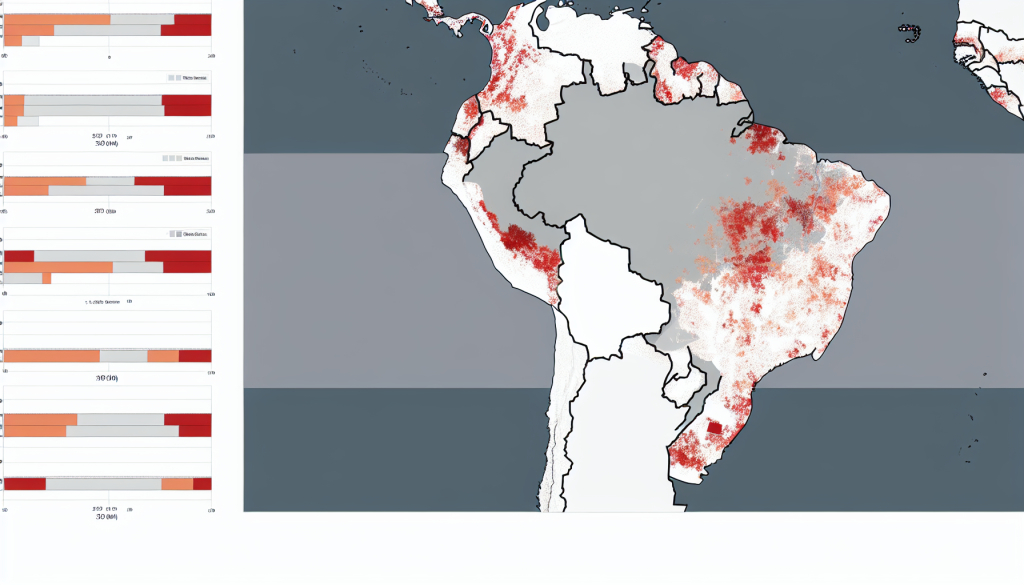Unprecedented 2024 Amazon wildfires fuel massive carbon output and severe ecological damage

Image:
A map of the Amazon region showcasing newly identified large-scale forest degradation in 2024, chiefly caused by fires. The map also illustrates national trends in deforestation, degradation, and fire occurrences from 2022 to 2024 (image source: Bourgoin et al., 2025).
Credit: Bourgoin et al.
Scientists at the European Commission’s Joint Research Centre have released a detailed report highlighting the Amazon’s most destructive fire season in more than twenty years. The extreme fire activity in 2024 generated an estimated 791 million tons of carbon dioxide – an alarming figure that mirrors Germany’s annual carbon output. This sharp surge represents a sevenfold increase compared to the average for 2022 and 2023. The research, published in Biogeosciences, indicates that fire events last year alone affected roughly 3.3 million hectares of forest across the Amazon.
This intensification in wildfire behavior is believed to stem from a mix of factors, including prolonged drought worsened by climate shifts, the breaking up of continuous forest areas, and poor land-use practices like intentional or accidental fires tied to land appropriation efforts. For the first time since the monitoring began in 2022, fire-driven damage has surpassed deforestation as the main source of carbon emissions in the region.
The research employed an advanced satellite-based technique that significantly improves upon earlier fire detection tools. By merging data from the Tropical Moist Forest monitoring platform with the Global Wildfire Information System, while removing false readings caused by agriculture or weather patterns, scientists achieved unprecedented accuracy in pinpointing fire-related forest damage.
The fires were widespread and particularly intense in certain areas. Brazil experienced its highest recorded level of emissions from forest degradation. In Bolivia, the fires devastated more than 9% of the country's untouched forest, dealing a heavy blow to one of South America's key ecosystems and carbon reservoirs.
To assess carbon emissions and their associated uncertainties, the scientists relied on a Monte Carlo simulation model. This method considered variables such as fire severity, biomass density, and the area of impacted forest, providing statistically grounded conclusions in line with standards set by the Intergovernmental Panel on Climate Change (IPCC).
Although deforestation has long been viewed as the Amazon's greatest threat, this report sheds light on the subtler, yet equally destructive, process of fire-related degradation. While these forests may appear untouched from above, their function and carbon-storing capacity are significantly compromised. These degraded areas often escape both national and global monitoring systems, making them a hidden but urgent problem.
The study advocates for immediate collective action—cutting back on fire use, enforcing stronger forest protection laws, and supporting Indigenous and local communities in safeguarding their territories. It also underscores the importance of global funding frameworks that address not only deforestation, but also widespread forest degradation.
Journal
Biogeosciences
DOI
10.5194/bg-22-5247-2025
Article Title
Extensive fire-driven degradation in 2024 marks worst Amazon forest disturbance in over 2 decades
Article Publication Date
8-Oct-2025

